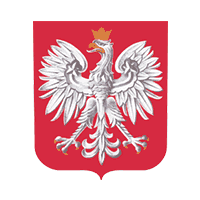CYBULSKI Krzysztof, MALICH Bogdan, ZELLNER Eugeniusz
In the article, we examine the changes in Polish legal regulations made over the past two decades as regards addressing the harmful effect of dust on the health of the underground coal mine personnel. We have characterised the changes in the key classification criteria for this health hazard, with special focus on the Geological and Mining Law introduced in 2012. By reviewing the existing legislation, we have made a detailed comparison of air dust concentration thresholds above which carrying out work is forbidden, and of the ongoing and periodical monitoring of the health hazard related to dust at workstations, including the measuring frequency.
KRÓL Krzysztof, KATAN Dariusz, RESPONDEK Andrzej
In the article, we analyse the methane-related hazards in Polish coal mines and the corresponding preventive measures taken, with special focus on demethanation. We have analysed the indicators of demethanation efficiency and of productive use of the captured gas, within the perspective of the entire coal mining industry in Poland. Additionally, drawing on the coal mining companies" data, we present the current entrepreneurial possibilities and planned operations in demethanation and use of captured gas. Based on this analysis, we conclude that demethanation technologies used in Poland enable high efficiency levels of this process. The most frequently quoted values for this indicator, slightly above 30%, are the consequence of setting the amount of captured methane against the total amount of methane released in the coal mines. A correct calculation, i.e. comparing the amount of methane captured from a longwall to the amount released to the environment of that longwall, obtaining efficiency levels above 50% is quite feasible.
MAŁOBĘCKI Eugeniusz, MIREK Adam, KOWALCZYK Zbigniew, DZIK Grażyna
In this article, we discuss the fundamental explosive-based methods of preventing rock bumps as used in KWK Mysłowice-Wesoła. We provide examples to illustrate the various types of shots fired to mitigate the risk of rock bumps, and the particular rules and conditions of firing such shots. We discuss the blasting methods used in specific exploration contexts when driving roadways and mining coal from longwalls; we review the effectiveness of these methods; finally, we describe additional uses of shot-firing. We close the article with conclusions.
MGŁOSIEK Jarosław, KUREK Sylwester, ZIEJEWSKI Kamil
In this communication, we present the method of surveying with a Reflex magnetic inclinometer. This device is used in drilling, along with many other devices, to survey trajectories of boreholes made in various settings, including underground mine headings
The statement presented from the Presidium of the Polish Academy of Sciences, related to natural gas in shale strata (so-called shale gas), was adopted on the 11th of March, 2014. The statement was prepared on the basis of partial reports from the appropriate Committees of the Polish Academy of Sciences. It presents a concise assessment of the current state of the exploration of shale gas, the state of recognition of its resources, as we// as selected environmental and economic aspects related to the potential development of shale gas resources in Poland. The statement also presents the opinion of the Polish Academy of Sciences on the scope of necessary scientific and R&D works and their organization, which should aid in the prospecting and exploration of deposits of shale gas, as well as their potential future development.



